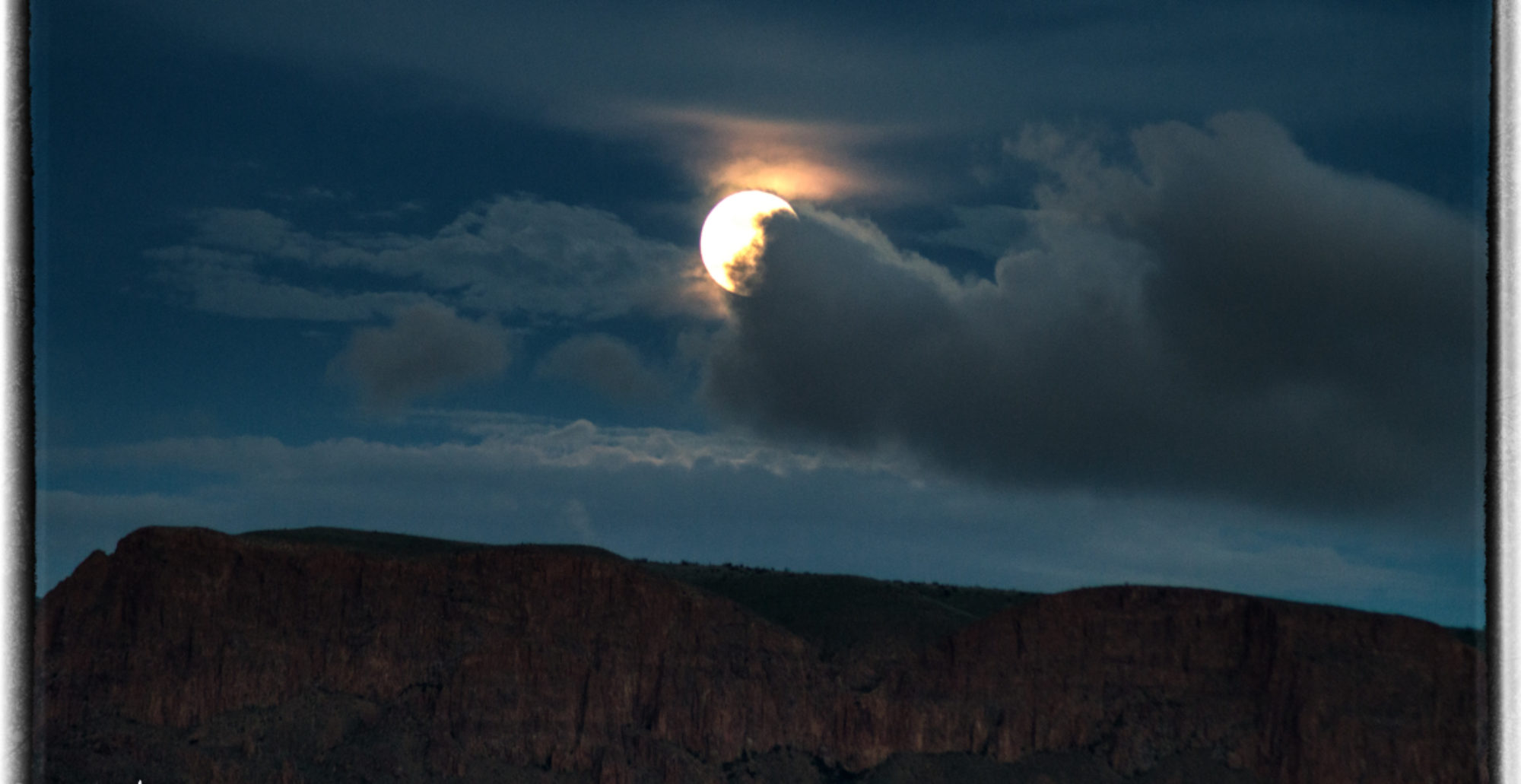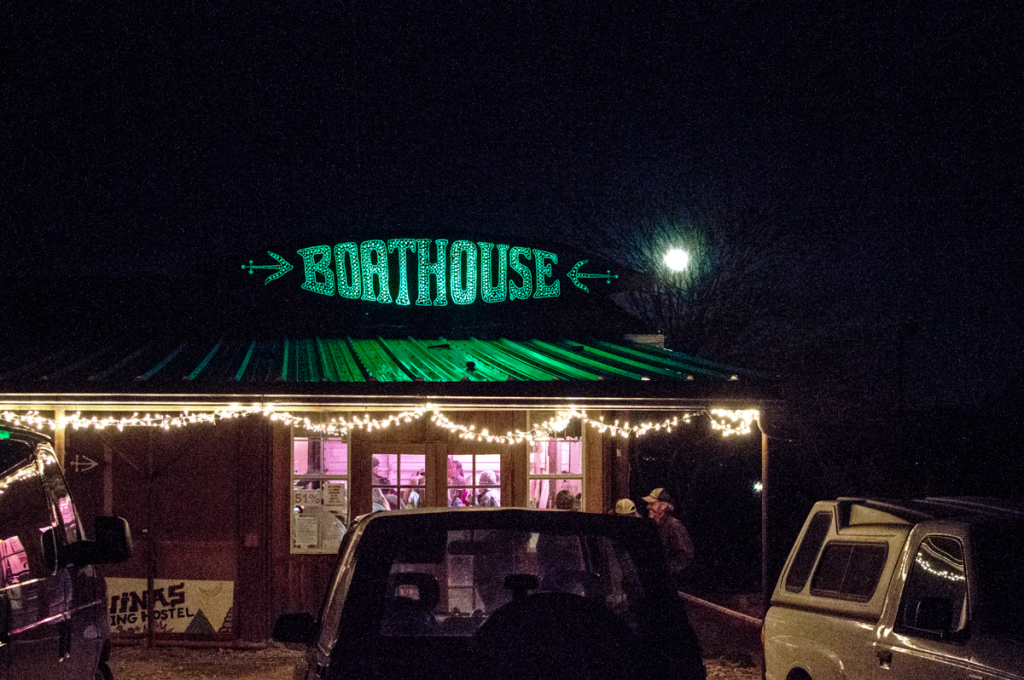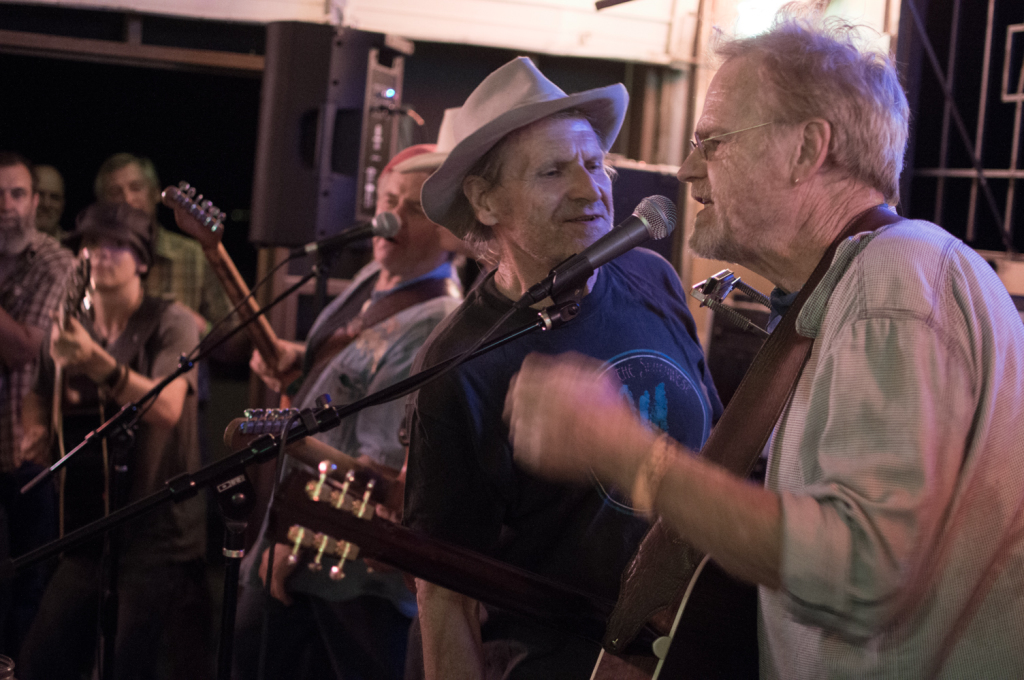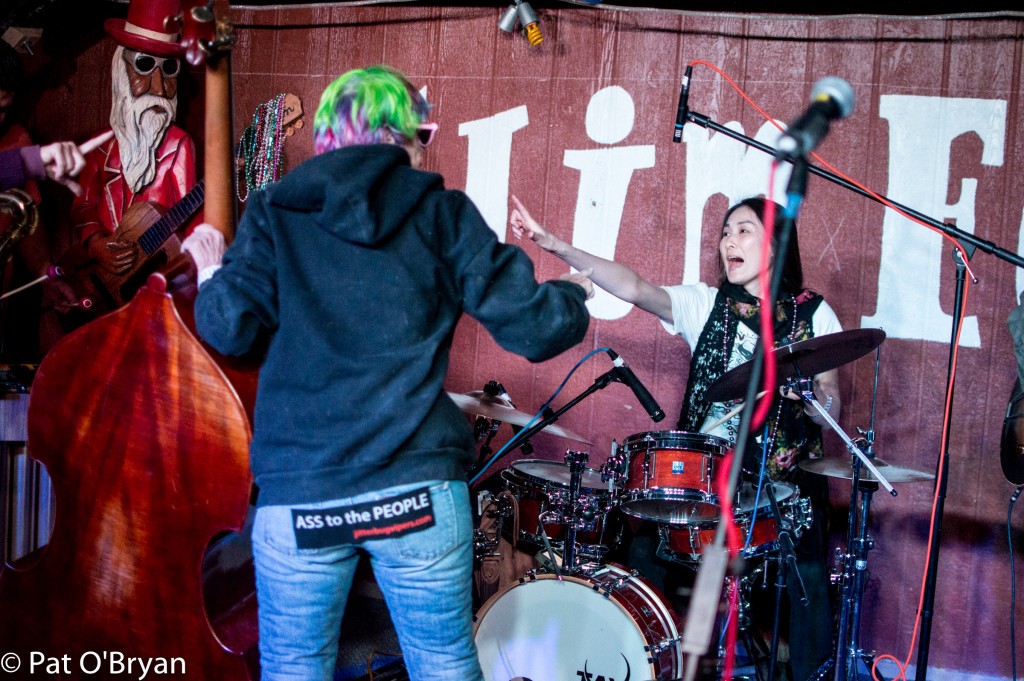It’s 2016. The history of the building we know as the Boathouse in Terlingua starts in 1981, There have been a lot of changes there during its 35 year life.
Since I’m a relative newcomer to the area- I bought my property 10 years ago and have lived here full-time for just 3 years – I asked Mike Davidson, who’s owned that property since the early 80’s, to write a “history of the Boathouse” for us- it’s included at the end of this blog post.
The Boathouse and the surrounding property is now owned by Mike Davidson and David and Kay Crum. For the last year and a half, Don McDowell has operated the restaurant and bar under a “month to month” lease. It’s been a glorious run…
There’s a very good reason that so many of us are emotionally invested in the current Boathouse and are sad that Don’s decided to move on to his next adventure.
There’s no doubt that Don and his staff make the best cheeseburger in Texas and provide a homey, comfortable ambience for having a drink. The Boathouse is known as “the locals bar.” Since there’s no visible clue from the outside that the Boathouse serves food and beer, most tourists pass it by, leaving it to serve as a haven for locals to get away from the foreign craziness and enjoy the home-brewed variety.
And then there’s the music. One moment that I’ll always cherish was during the 2nd Viva Terlingua Music Festival when Bob Livingston, Bradley Kopp, Butch and Rory Hancock, Marina Rocksu, Claude Butch Morgan, Ashley Monical, and Moses Martinez put on a show that had heads spinning and the dance floor packed. And that was just 2 hours out of a year and half of music.
Jeffro Greasewood of Far Out Booking brought a level of professionalism to the Boathouse that hadn’t been seen there before, hosting the Wednesday night open mics, engineering the sound, and bringing in acts that hadn’t played Terlingua before (many of whom are strategizing on ways to move to Terlingua) and culminating with SlimFest1. For that, he brought in a professional sound and light crew, a roster of amazing musicians (Carolyn Wonderland! Ghosts! Jitterbug Vipers! Butch and Rory Hancock!), and set a very high bar for live music in Terlingua.
What a change! It’s doubtful if the locals playing on the porch at the Study Butte Store back in the 80’s would have believed you if you had told them that just a few decades later there would be a polished, professional music festival just down the street. The boatmen hanging out at the “teen club” behind the Boathouse would have been shocked. I don’t know that they would have been pleased. Such changes would have imposed greatly on their freedom to party unsupervised and privately.
But then, I overheard a conversation on the porch recently where a few old-timers were lamenting the fact that there was a roof on the Starlight Theatre and reminiscing about the impromptu dances that were held there pre-roof- somebody would bring a generator, others would bring musical instruments, booze and other substances would be available… it sounds like fun and I’m sorry I missed it.
Change, although it’s the only constant that you can rely on, can cause heartbreak if you hold on to the past. As Byron Katie says, “don’t argue with reality because you’ll lose. But, only every time.”
The hipsters cruising South Congress and 6th Street in Austin today have no idea what they missed. When I got there in 1978, the local musicians were already bemoaning the loss of the seminal clubs that started the music revolution there.
I was able to play the Armadillo a few times, Liberty Lunch multiple times, the Austin Outhouse… those are all gone, now. Austin became the “live music capital of the world” because rent was cheap, pot was cheap, food was cheap, and there were more bars to play then there were bands to play them. Change occurred, which is why so many musicians are coming to Terlingua.
When I first moved to Wimberley, it was a sleepy little town. I remember jamming with Gary Boggs on the square in 1996, sharing a joint and looking out at Ranch Road 12 that had so little traffic on it that you could take a nap safely in either lane. Jimmy Ash would lead “Heavenly Choir” jams around campfires at parties in the woods. Mike Bond hosted Friday Night bluegrass jams and this little skinny girl named Sarah Jarosz would sit in on mandolin. Weekly jam sessions at the Devil’s Backbone tavern attracted some amazing musicians like Marc Benno and Mason Ruffner. It was a magical time.
Today, Wimberley is a bedroom community- basically far-South Austin. Traffic lights, traffic jams, crowded stores…
And now Terlingua. The “Last Frontier” has been discovered. The tourism board pumps over $800,000 a year into promoting the area. Tourists from all over the world come here to get away from the crowds and commercialism- creating an environment of crowds and commercialism. Some of them buy land and stay.
The rooms behind the Starlight Theatre which you used to be able to rent for $50/month are now going for up to $200/night. Tourists who want to be near the action in the Ghost Town are renting everything from luxury condos to teepees and tents. Houses that used to be rented cheaply by locals are on AirBNB now. A new organization, the Terlingua Fair Housing Alliance, is looking at ways to navigate these growing pains- you should get involved.
The good news is that the Boathouse will reopen soon. There are plans to build an event center behind it and convert the volleyball court into a beer garden. The construction and operation of this expanded property will provide many jobs for locals and continue the trend of promoting live music.
The owners have very clear plans about the future of the property and are going to be personally involved in creating reality out of their vision. I will also be involved in some capacity.
The important thing to remember is that in this story there are no “good guys” or “bad guys.” If you want to know why Don’s moving on, ask him. His answer, if you’ve been listening to the gossip that inevitably swirls like a dust devil through the Ghost Town, may surprise you. The only villain is time and change.
If you, like me, would prefer to have nachos and beer in the Armadillo beer garden, circa 1978, or dance to the Uranium Savages at the Soap Creek Saloon, or jam with Benno at the Devil’s Backbone Tavern in the 80’s, or party under the stars at the Starlight Theatre back before they put a roof on it, or sit back with a burger and a glass of box wine and listen to Butch Hancock play at the open mic at the Boathouse…
I’m afraid the Greek Philosopher Heraclitus nailed it in 500 BC: “The only constant is change.”
Brief History of the Boat House by: Mike Davidson
Far Flung Adventures purchased the primary 5 acres around 1981, and bought an adjoining 2.5 not long after that. We slowly began building what would become the Boat House, starting with a foundation from an old building with a few crumbling walls remaining. We collected rocks from the various arroyos and built in stone up to a point.
When Far Flung first started renting in the Ghost Town in 1977, the owner was Paul Vonn. In the early 80’s (like maybe 1980) he made a deal with the McKinney family to buy the property. We later made a (verbal) deal with them to restore and repair the old machine shop, which was in serious disrepair, like no roof and filled with dirt and trash to a depth of almost 2 feet. The deal is that we would have the place on a ten year lease basis. After they saw what we had done, the lease was summarily shortened to two years, beginning when we started restoration. So this encouraged us to kick up the Boat House construction pace and we stopped the stone walls at about 3 feet high or whatever it is today, and then built a post and beam structure with telephone poles upright. We built all the roof trusses on the ground, and then had a roof raising party where a bunch of folks helped lift the trusses up on to the beams and we nailed them down, braced them off, and consumed a huge quantity of keg beer. Doug Blackmon, before he became a doctor, was found in the morning passed out cold, face down on the concrete floor. I recall this in early May so the weather was OK for impromptu camping.
I designed the roof and the way it is attached so that it would hold up in high winds, and so far so good. I was the main carpenter, but obviously had some help from time to time, often what we euphemized at the time as foreign exchanged students. I did all the framing and trim, but when it came to cement and masonry, we used folks from down south. The deal was that you would house the workers, provide them with food and a place to prepare it, and pay anywhere from 10-15 per day depending on skill level. The adobe building was a good example of this. I hauled every adobe block from Arturo White’s store. In those days, he sold adobe blocks 4” x 8” x 16” for 50 cents each. All the cement was mixed by hand, on the ground. Take a look at the floors and see what shape they are in 30 years later. Also, the stucco was mixed like that, and applied in one layer with no mesh or lathing. Again, take a look.
So, the main structure at first was what is now the bar room, dining area and kitchen. The rear bay dropped off so you could back a trailer up to it and the trailer was about floor height for easy loading and off loading. Soon, we added on two storage areas, which are now where the bath rooms and the back rooms are. We kept it dirt floor for a time, but grew tired of the dust. The gringo boys learned a trick from our seasonal guests and we mixed all the cement by hand on the ground. We did this in the summer when business was slow, and did it all at night.
So one can see how the Boat House has my blood and sweat into it at every step. Moving on to 2001, I had become extremely tired of the river business and in truth, dealing with lots of cranky employees, so I sold out the operation and kept the property. That’s when we poured the patio slab and the dance floor, late 2001, early 2002. We also built the bar, installed sheetrock, painted, added doors, windows, excellent electricity service. We opened sometime spring of 2002 and had a well respected restaurant that never seemed to make any money. The food was very good, not a burger nor french fry to be seen. We also rented the space to Trevor Hickle for an internet cafe during the day, where he served coffee and some other items. That did not last a long time but it was cool while it did. Ther finances behind the restaurant (me) dried up, and Chad was running the starlight and decided to lease the place simply as a defensive measure because it was cutting into his business. He had it for a few years; in 2006 I moved to Alpine and became more based out of there and was a distant land lord. When Chad left, George Fullwood rented it, and though I was paid rent, and some people liked the place, we lost a couple of good years, while George let the place get dirty and had very limited vision. So segue into as I recall early 2014, and I make a deal with Dave Crum for an undivided 50%. George kept the place through May of that year. Soon thereafter, Don approached us about renting the place. We made a deal to go month to month, and I think you know the rest of the story. Looking back, the deal did not turn out very well for us. But live and learn





Interesting and enjoyable reading , Pat. Your mention of Mason Ruffner brings me back to a blues club in downtown Dallas around 25 years ago where I experienced one of the best nights I can remember. The evening began with several hours of dancing to the live music of Mason and his band.
Was this where we had diner after either seeing the Starlight Theater or going on a guided horse ride in 2009 with the bunch of press folks? If so, I remember you sitting in with the band some time after food was served and telling me about your brother who tours with “Tower of Power” – and naturally, I was blown away! I really enjoyed the place and company, although we were strangers passing through, of course. Anyway – best of luck with starting another chapter for the Boathouse! Greets from across the ocean.
(How is Jim Bones?)
Pat,
I ‘discoverd’ Terlingua this past week. It was not because of tourism or a tv show, but because I wanted to see Big Bend and had previously rented a room out in the historic Saucedo house in the state park, not realizing it was far away from the trails of the national park. Terlingua was the closest place to the park itself, and so I rented a room from a nice resident, who actually invited us to the Boathouse for open mic night. I wish we had gone and met you and the other great residents of Terlingua.
It wasn’t until after that I googled terlingua, as I decided (as I’m sure many do after a visit) that I would live here–eventually. Granted, living off the grid as somewhat of a hermit has always been my goal–but I thought the landscape would be closer to Wyoming than East Texas. There was something thrilling and terrifying about the landscape, and something vibrant about the residents that almost made me want to cry from relief after coming from Dallas, where I currently work.
After our visit, I googled the area and came across the awful reality show and then your website. I am so sad.
I have never been to Austin, because by the time I was old enough to go there–it was already as you describe. Friends would drive up to get wasted on sixth street and listen to EDM, coming back with stories of roofies and neon glow sticks. No thanks.
I hate change, and I hate that I only discover things at the tail end, and eventually become one of the people that would undoubtedly be ruining these special places. I grew up listening to Robert Earl Keen and Jerry Jeff Walker, and had my own idea about what college would be up at Texas A&M. Unfortunately, I got there a couple years before Manziel and saw the place lose what little tradition and authenticity it had left. I grew up going to Gruene Hall and Floore’s Country store and have seen the demographics change there too, although I’m sure that was taking place long before I was born. I have my father’s memory, about what these places were–and I feel nostalgia without ever really knowing them.
I’m sad to hear Terlingua is going the same way. Authenticity will always be prostituted and there’s very little left for my generation to find. I guess we still haven’t been able to create any for ourselves, and that deeply saddens me. Consumerism and commercialism is the way we’ve learned to live our lives, and since we’ve never learned how to create, the best we can hope for is to consume the heck out of the authentic, play dress up and hope that we’ve established some sort of an identity for ourselves.
I truly hope my generation can create a community and an environment as beautiful as the ones that your generation did. Until then, it seems all we do is create instagramed mementos before we obliterate these special places with the desire to latch on to an identity that we can then advertise to the rest of the world, not as a place, but a place that was discovered by me, that is apart of ME, that is a marker of MY identity. It’s the way that we’ve learned to communicate, it’s the media that we have.
If and when we do start moving out to Terlingua, you have every right to be deeply saddened, but we deserve a little sympathy too, as we’re searching for something we haven’t been given the tools to create ourselves. And we know that inevitably our discovery is probably the end of what drew us here to begin with.